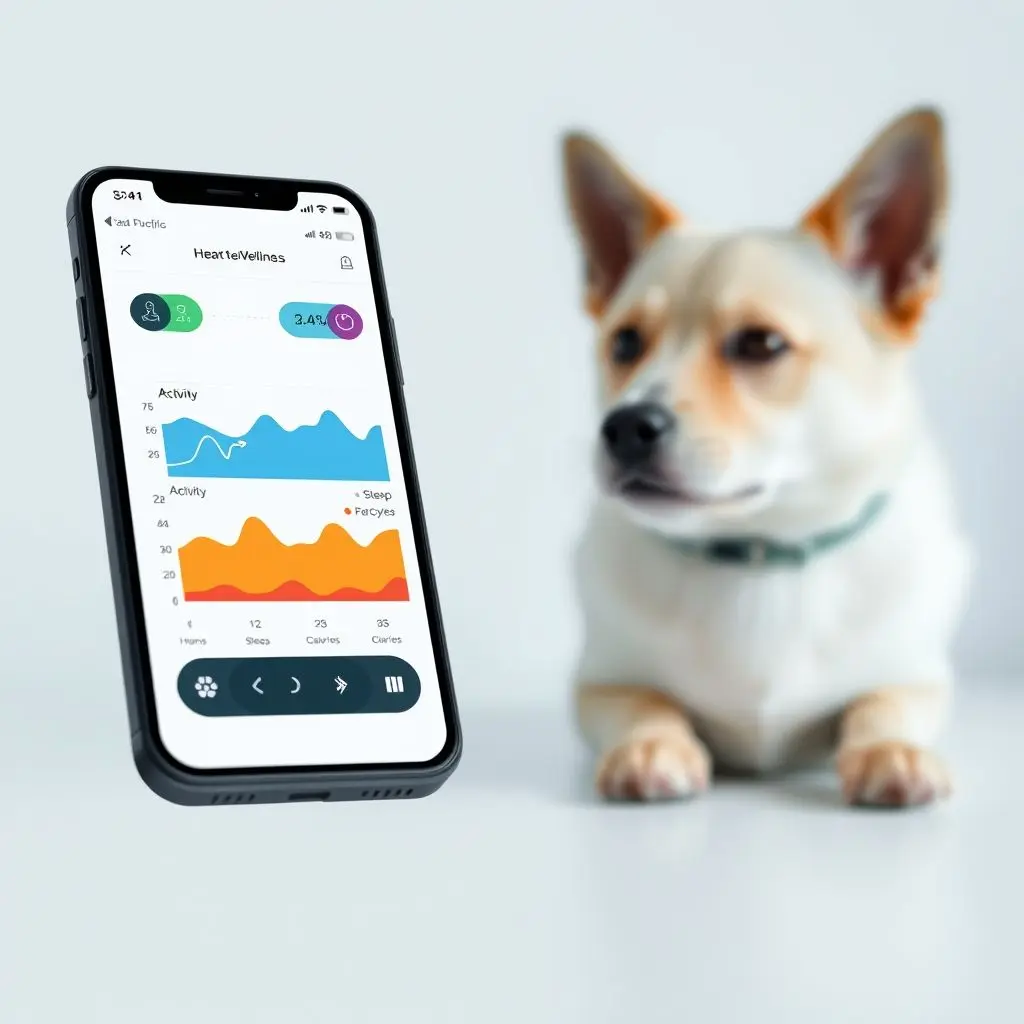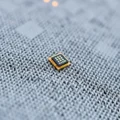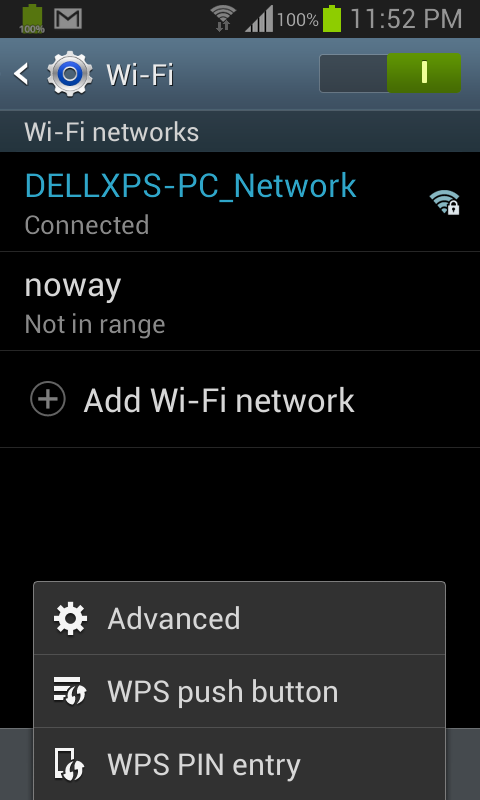Your beloved companion’s collar is no longer just a place for an ID tag and leash attachment. We’ve entered an exciting era where pet accessories have undergone a significant technological transformation, evolving into sophisticated gadgets that offer unparalleled peace of mind and deeper insights into your furry friend’s world.
Gone are the days of simple jingling tags. Today’s smart collars are miniature tech powerhouses, packing advanced features that transcend basic identification. From sophisticated GPS tracking that pinpoints your adventurous explorer’s exact whereabouts, alleviating the age-old ‘where’s Fido?’ dilemma, to comprehensive health and activity monitoring, these wearables are redefining pet care.
They delve into your pet’s vital signs, track their activity levels, and even analyze sleep patterns, providing you with a wealth of unprecedented insights into their overall well-being. Imagine the power of early detection for potential health issues or simply ensuring your energetic pup is getting enough ‘zoomies’ time! Beyond health, some smart collars incorporate features like virtual fences or specialized training modes, offering safer and more effective ways to manage behavior.
This isn’t just about gadgetry; it’s about empowering you with actionable data, transforming traditional ‘pet parenting’ into a form of ‘precision pet parenting.’ No more relying solely on guesswork; now, data-driven care is at your fingertips for your cherished companion. It’s the ultimate ‘paw-some partnership’ – where cutting-edge technology truly meets unwavering loyalty.
For a quick glimpse into the world of smart collars and what they offer, check out our YouTube Shorts video below:
Table of Contents
The Evolution of the Pet Collar: From Necessity to Innovation
For centuries, the primary role of a pet collar was purely functional: a means to attach a leash, a tag for identification, or perhaps a bell. While these fundamental purposes remain, the advent of micro-electronics and connectivity has propelled the collar into an entirely new dimension. We’ve moved beyond simple name tags to devices that offer real-time data, proactive safety measures, and unprecedented insights into our pets’ lives.
Heart of the Matter: Key Technologies Powering Smart Collars
At their core, smart collars are miniaturized computers, leveraging a combination of sensors, communication modules, and sophisticated software to deliver their features. Let’s delve into the technological backbone that makes them so transformative.
GPS Tracking & Geofencing: Never Lose Sight
One of the most sought-after features in a smart collar is its ability to track your pet’s location. This is achieved through advanced Global Positioning System (GPS) technology, often augmented by other positioning systems like GLONASS or Galileo for enhanced accuracy. Many collars also integrate Wi-Fi and cellular triangulation for better performance indoors or in areas with poor satellite reception.
- Real-time Location: View your pet’s exact position on a map via a smartphone app, providing immediate reassurance if they wander off or get lost.
- Location History: Review your pet’s past adventures, understand their roaming habits, and identify favorite spots.
- Virtual Fences (Geofencing): Set predefined safe zones on the map (e.g., your yard, a local park). If your pet crosses these digital boundaries, you receive an instant alert on your phone. This is a game-changer for pets prone to escaping or for maintaining boundaries without physical barriers.
While incredibly powerful, it’s worth noting that GPS accuracy can sometimes be affected by dense urban environments, heavy tree cover, or indoor settings. Battery life is also a significant consideration, as continuous GPS tracking consumes considerable power.
![]()
Health & Wellness Monitoring: A Window into Well-being
Beyond location, smart collars are increasingly becoming personal health assistants for our pets. They gather data that can paint a detailed picture of your pet’s health trends and overall well-being, often detecting anomalies that might otherwise go unnoticed.
- Activity Tracking: Utilizing accelerometers and gyroscopes (similar to your fitness tracker), these collars monitor your pet’s activity levels throughout the day. This includes steps taken, distance covered, calories burned, and even distinguishing between play, rest, and active walking. Monitoring activity helps ensure your pet gets adequate exercise for their breed and age, preventing obesity and related health issues.
- Sleep Pattern Analysis: Just like humans, sleep quality is vital for pets. Smart collars can track duration and quality of sleep, identifying restless nights or excessive napping, which could indicate discomfort or underlying health problems.
- Behavioral Insights: Some advanced collars can detect unusual behaviors such as excessive scratching, shaking, or continuous barking, potentially signaling allergies, anxiety, or pain. While not a diagnostic tool, these alerts can prompt you to observe your pet more closely or consult a vet.
- Limited Vital Signs & Temperature (Emerging): While true, continuous, medical-grade vital sign monitoring (like heart rate or respiratory rate) is still largely confined to veterinary settings, some smart collars are beginning to offer approximations or skin temperature readings. It’s important to understand that these are often inferred from activity patterns or external sensors and should not replace professional veterinary diagnostics. Always consult your vet for any health concerns.

Connectivity & Communication: The Data Lifeline
For all this data to be useful, it needs to be transmitted from the collar to your smartphone or a cloud server. Smart collars employ various communication technologies:
- Bluetooth: Ideal for short-range communication, typically used to sync data with your phone when your pet is nearby or for initial setup.
- Wi-Fi: Can be used for faster data uploads when your pet is within range of your home Wi-Fi network.
- Cellular (LTE-M, NB-IoT): This is crucial for real-time GPS tracking and alerts when your pet is outside of Bluetooth or Wi-Fi range. Most cellular-enabled collars require a monthly or annual subscription plan, similar to a mobile phone plan, to cover data transmission costs.
- Cloud Integration: Data is typically uploaded to a secure cloud platform, allowing you to access insights, track history, and receive alerts from anywhere via a dedicated mobile app.
Battery Life & Durability: Practical Considerations
Given the constant monitoring and communication, battery life is a paramount concern for smart collars. Manufacturers strive to balance features with power efficiency. Battery duration can range from a few days to several weeks, depending on usage (e.g., continuous GPS tracking drains battery faster) and the model. Rechargeable batteries, often via USB, are standard.
Durability is also key. Pets are active and can be messy. Most reputable smart collars are designed to be waterproof or highly water-resistant and built with rugged materials to withstand the rigors of outdoor adventures, muddy puddles, and playful roughhousing.
Beyond Tracking: Advanced Features & Applications
The innovation doesn’t stop at location and health monitoring. Smart collars are expanding their capabilities to offer even more direct benefits for pet parents.
- Training & Behavior Management: Some collars incorporate gentle vibration or sound alerts that can be used for positive reinforcement training or to gently discourage unwanted behaviors. Think of it as a modern, humane alternative to traditional training collars, often integrated with app-based training programs.
- Light & Safety Features: Integrated LED lights can be remotely activated, enhancing your pet’s visibility during night walks or making them easier to spot in low-light conditions. This is a simple yet effective safety feature.
- Community Lost & Found Networks: A growing trend involves smart collars that can leverage a community network. If your pet goes missing, other users with the same brand’s app, or even just Bluetooth-enabled phones, can help detect your pet’s collar and anonymously report their location, expanding the search radius significantly.
Choosing the Right Smart Collar for Your Companion
With a plethora of options available, selecting the ideal smart collar requires careful consideration. Here are key factors to weigh:
- Pet Size & Breed: Ensure the collar is appropriately sized and comfortable for your pet. A bulky collar on a tiny Chihuahua won’t work, nor will a flimsy one on a large, strong Labrador.
- Essential Features: Do you primarily need GPS tracking, or are health insights your priority? Some collars excel in one area more than others.
- Battery Life: Consider your lifestyle. If you’re out hiking all day, you’ll need a longer-lasting battery than if your pet primarily stays indoors.
- Connectivity & Subscription: Are you comfortable with a monthly subscription for cellular service? Understand the costs associated with data plans.
- Durability & Water Resistance: Assess your pet’s activity level and environment. A waterproof collar is essential for water-loving dogs.
- Comfort & Design: The collar should be comfortable for your pet to wear 24/7 without causing irritation.

The Future is Bright (and Connected) for Pet Wearables
The smart collar market is still relatively young, and innovation is accelerating rapidly. We can anticipate even more sophisticated health monitoring capabilities, potentially leveraging AI to detect subtle changes in gait, vocalizations, or even stress levels. Integration with smart home systems could become more seamless, automatically adjusting temperature or playing soothing sounds based on pet activity. The potential for tele-veterinary services to leverage data from these wearables for remote consultations is also on the horizon.
Important Considerations & Disclaimers
While smart collars offer incredible benefits, it’s crucial to use them responsibly. Data privacy is a key concern; ensure you choose reputable brands that clearly outline their data handling policies. Remember that no technology is foolproof; a smart collar complements, but does not replace, responsible pet ownership, regular veterinary check-ups, and a secure home environment.
Frequently Asked Questions (FAQs) About Smart Collars
Are smart collars safe for my pet?
Yes, reputable smart collars are designed with pet safety in mind. They use low-power radio frequencies and are built with non-toxic, durable materials. Always ensure the collar fits properly to prevent discomfort or chafing.
How accurate is GPS tracking on these collars?
GPS accuracy can vary depending on the model, satellite availability, and environmental factors (e.g., dense buildings, heavy tree cover). Most offer accuracy within a few meters outdoors. Some use Wi-Fi or cellular triangulation to improve indoor or urban accuracy, though this can still be less precise than open-sky GPS.
Do I need a subscription for a smart collar?
Many smart collars that offer real-time GPS tracking and cellular connectivity require a monthly or annual subscription plan. This covers the cost of the cellular data needed to transmit location and health information. Collars that rely solely on Bluetooth for data syncing typically do not require a subscription.
How often do I need to charge a smart collar?
Battery life varies significantly by model and usage. Collars with constant GPS tracking may need charging every 1-3 days, while those with more basic features or less frequent updates might last a week or more. Check the manufacturer’s specifications for estimated battery life.
Can a smart collar track my pet indoors?
GPS signals can be weak or unavailable indoors. To compensate, many smart collars utilize Wi-Fi or cellular triangulation for indoor location, though these methods are generally less precise than outdoor GPS. For very accurate indoor tracking, some systems integrate with home Wi-Fi networks or Bluetooth beacons, but this is less common.
Are smart collars waterproof?
Most quality smart collars are designed to be water-resistant, and many are fully waterproof (rated IP67 or higher), meaning they can withstand submersion for a period. Always check the specific IP rating to ensure it meets your pet’s needs (e.g., swimming vs. just rain). A higher IP number indicates better water resistance.
The Ultimate Paw-some Partnership
The integration of technology into our pets’ lives marks a significant leap forward in responsible pet ownership. Smart collars, with their innovative blend of GPS tracking, health monitoring, and advanced safety features, are not just gadgets; they are tools that deepen our understanding of our beloved companions, enhance their safety, and ultimately, strengthen the incredible bond we share. Embrace the future of pet care – it’s smarter, safer, and infinitely more connected.




